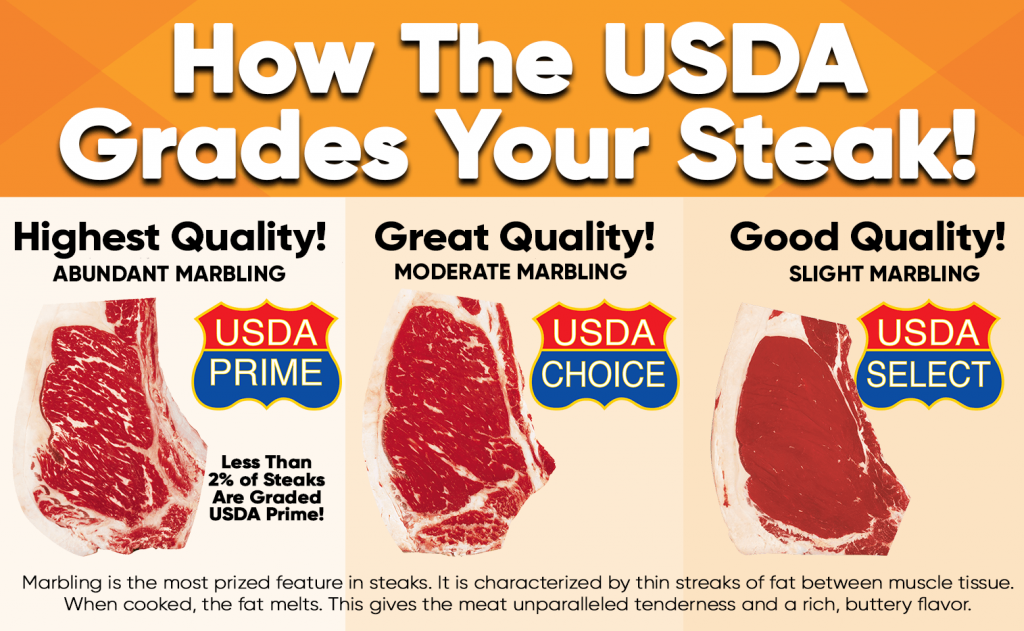The USDA grade shields are highly regarded as symbols of safe, high-quality American beef. Quality grades are widely used as a “language” within the beef industry, making business transactions easier and providing a vital link to support rural America. Consumers, as well as those involved in the marketing of agricultural products, benefit from the greater efficiency permitted by the availability and application of grade standards.
Beef is evaluated by highly-skilled USDA meat graders using a subjective characteristic assessment process and electronic instruments to measure meat characteristics. These characteristics follow the official grade standards developed, maintained and interpreted by the USDA’s Agricultural Marketing Service.
Beef is graded in two ways: quality grades for tenderness, juiciness, and flavor; and yield grades for the amount of usable lean meat on the carcass. From a consumer standpoint, what do these quality beef grades mean?


Prime Beef
Prime beef is produced from young, well-fed beef cattle. USDA Prime is the highest in quality and marbling (the amount of fat interspersed with lean meat) and represents less than 3% of all beef produced in the United States. It is generally sold in restaurants and hotels. Prime steaks and roasts are excellent for dry-heat cooking such as grilling and roasting.

Choice Beef
Choice beef is high quality but has less marbling than Prime. Choice steaks and roasts from the loin and rib will be very tender, juicy, and flavorful and are suited for dry-heat cooking. Many of the less tender cuts can also be cooked with dry heat if not overcooked. Such cuts will be most tender if brazed, roasted, or simmered with a small amount of liquid in a tightly covered pan.



